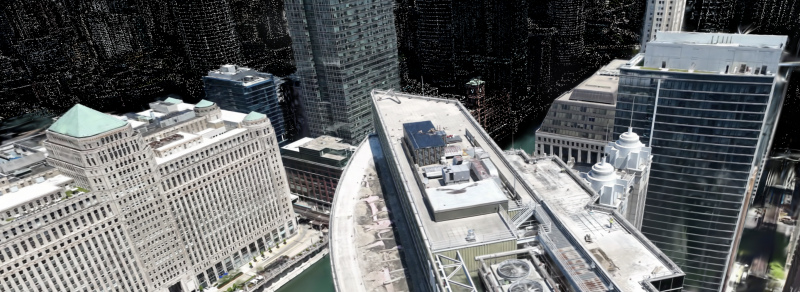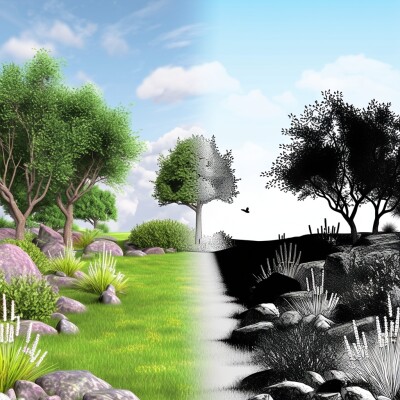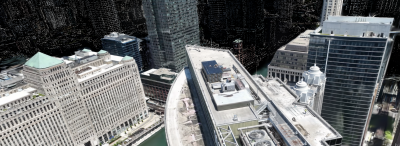As the process for creating and rendering 3D models of real-world assets has become less cumbersome in recent years, the area has exploded as a variety of industries and professionals have seen the value in these workflows. With this mass adoption we’ve also seen a tremendous amount of innovation in the space in a short amount of time, with the last couple of years seeing the development of Neural Radiance Fields, or NeRFs, and more recently Gaussian Splatting. Each of these techniques allows for the creation of highly realistic 3D rendering of real-world scenes using far fewer images than a process like photogrammetry, but are still extremely new and thus relatively unknown.
That said, the excitement around these techniques are growing rapidly, with one anecdotal piece of evidence being the packed area in each of the last two years for panels on the tools at the Geo Week conference. Even since this year’s Geo Week, the techniques have matured some and interest around them continue to grow. With that in mind, we wanted to put together a panel of experts who utilize these techniques in the real world to discuss what they are, where the value lies, and what still needs to be addressed for maximum value, and we did that with a webinar earlier this month.
I had the pleasure of moderating the discussion, entitled NeRFs and Gaussian Splatting: The Future of 3D, which included the following speakers:
Jonathan Stephens, Chief Evangelist & Marketing Director, EveryPoint
Yoshi Sato, Founder, Waldek Technologies
Ted Parisot, Co-Founder, Helios Visions
Below you’ll find five of my biggest takeaways from the webinar, which included presentations from all three speakers as well as a Q&A session at the end, and be sure to sign up for your on-demand recording using the link below to hear the entire conversation and see the incredible visuals.
Gaussian Splatting Can Change the Visualization Game
This webinar did focus on both Gaussian Splatting and NeRFs, and while – as we’ll discuss in just a bit – the latter is not a dead technique, it’s clear that the former is the preferred technique for the time being. It’s clear from these industry veterans that its ability to change the way 3D visualizations and rendering is done is readily apparent to anyone who uses the techniques.
That’s not to say it’s not without its shortcomings – again, we’ll touch on that later – but there are ways it excels compared to more traditional data capture and 3D model creation. For one thing, it requires fewer images than traditional photogrammetry, and in his presentation Stephens explains the technological workflows behind allowing that to happen. Additionally, again compared to photogrammetry, it is often able to better pick up on small details, rendering things like reflective surfaces and wires better than traditional methods.
NeRFs Are Not Going Away
Again, while Gaussian Splatting seems to be the preferred technique for these panelists and many others in the space that one comes across on platforms like LinkedIn, the webinar makes clear that NeRFs are not going away. There are a lot of similarities between the two techniques, and while they get to their rendering via different methods under the hood, they both ultimately create accurate visualizations with fewer images than traditional photogrammetry. As the panelists discuss during the Q&A portion of the conversation, NeRFs can actually achieve higher fidelity, though today it has to be pre-rendered to share.
Gaussian Splats Shouldn’t be Viewed as the Panacea
Although there is plenty of justified excitement around Gaussian Splats and their potential right now, it was made clear from these panelists that it shouldn’t be viewed as a finished product or one that can be used for everything that, say, photogrammetry could be used for. Most notably, these renderings are not georeferenced, and thus shouldn’t be relied upon for measurements and other similar workflows. Instead, their best use case at this point is for sharing renderings to stakeholders for things like presentations, updating on construction projects and other similar use cases.
No Need for Powerful Machines
We’ve alluded to this already, but here lies the ultimate advantage for Gaussian Splats right now: It’s ability to render on “simple” machines. As we noted in the NeRF section above, those require models to be pre-rendered for sharing, because rendering takes a long time and/or requires powerful machines that most stakeholders will not have. For Splats, however, the rendering can happen in real-time on most laptops, and even phones. Thus, as Parisot and Sato demonstrated live during the webinar, if a professional is trying to share a project update to stakeholders, they can simply send a link to the rendering and the recipient should be able to view that on their local machine.
The Innovation is Only Just Beginning
If there’s anything that becomes clear in conversations with professionals working with these techniques, it’s that change on this front is happening rapidly. In a way, that sounds obvious for a space that has already evolved tremendously despite – in splatting’s case – being less than a year old. (The first Gaussian Splatting paper was released in August of 2023.) Stephens follows this space closely, and sees updates coming through constantly. In fact, he mentioned that a new paper had been released just a day before the recording of this webinar. So, while there are shortcomings for each technique today, expect those to be addressed moving forward. Whether it be adding georeferencing capabilities, or even some combination of both NeRFs and Gaussian Splatting, or something we can’t even think of today, be on the constant lookout for the next step in this evolution.
Be sure to register for your free, on-demand recording of this fascinating discussion by following the link below.






